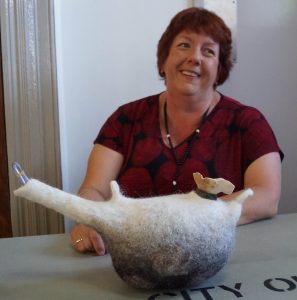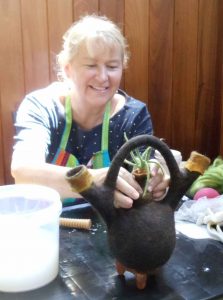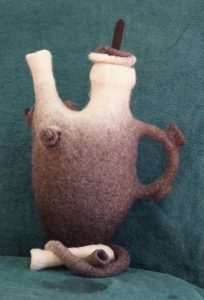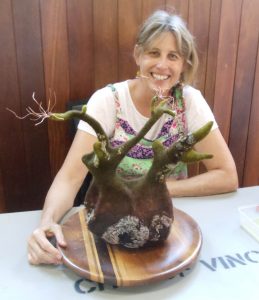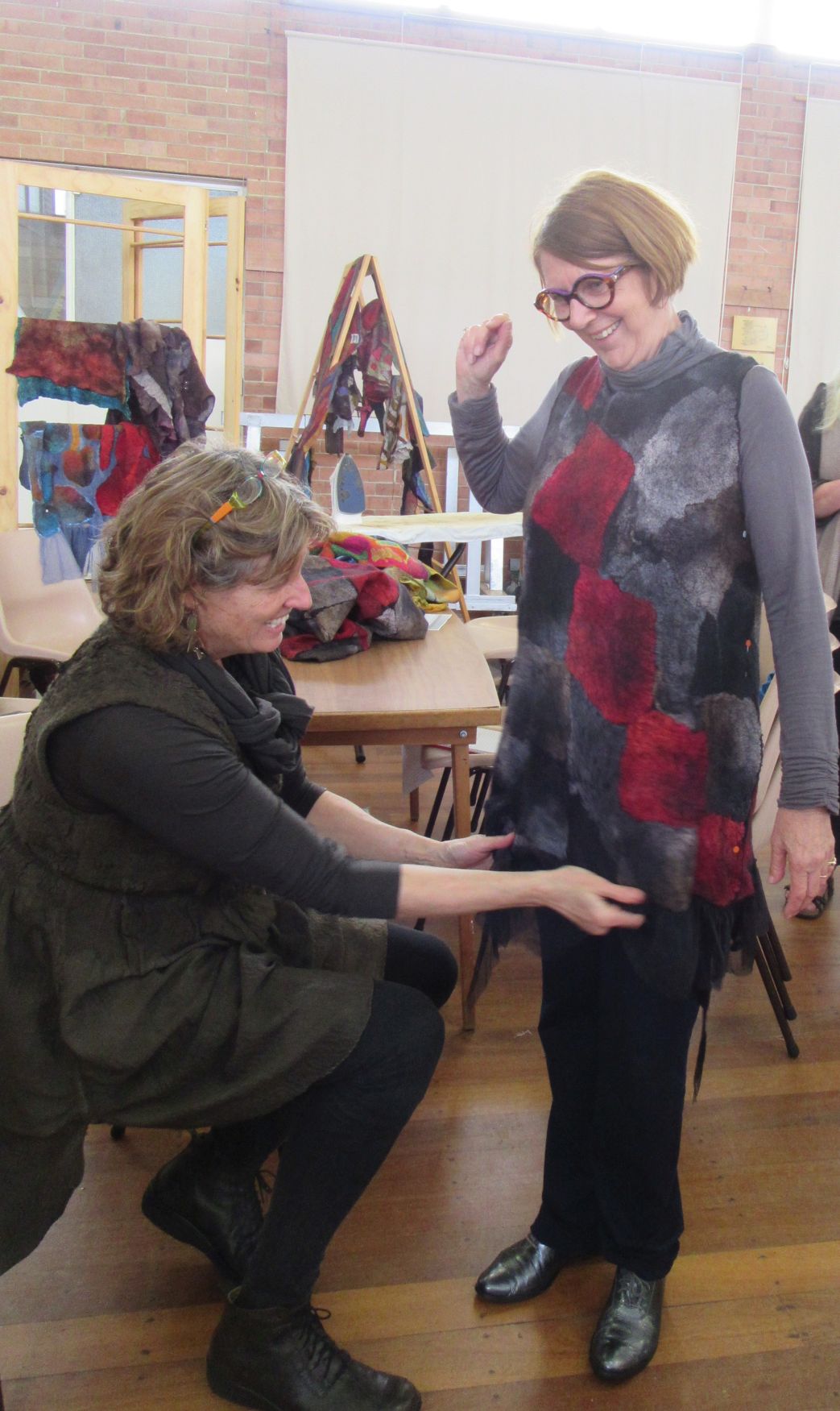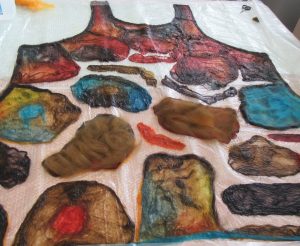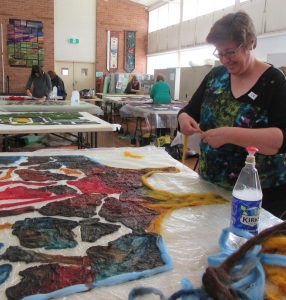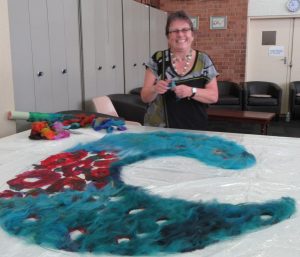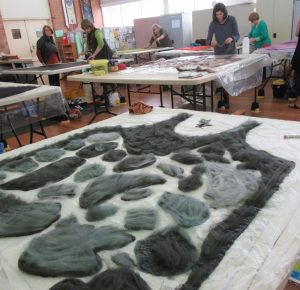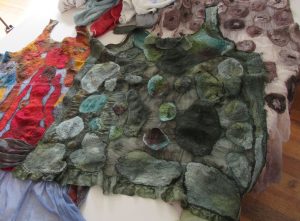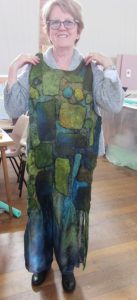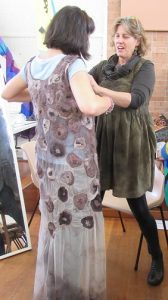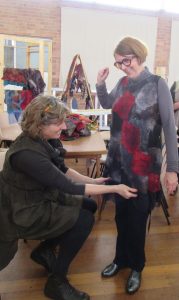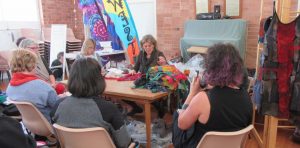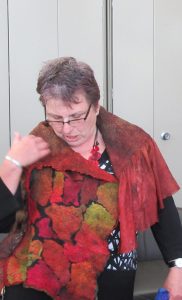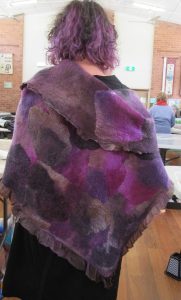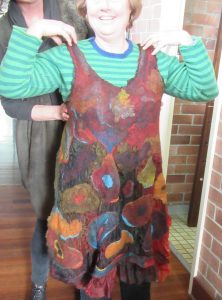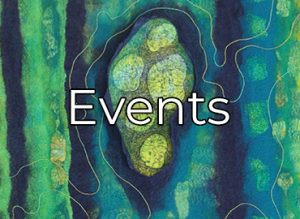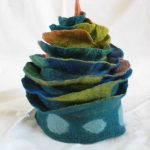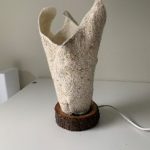
The Feltwest Annual General Meeting started by welcoming representatives from the Funds for Freedom Project for the presentation of a cheque for $2,000 – the proceeds from our 50:50 scarf project. These funds will be used to support women and children escaping domestic violence.
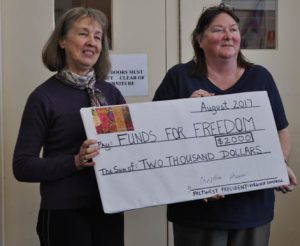
The retiring Committee members were thanked for their huge contributions over the years. These include Virginia Campbell, Soosie Jobson, Nancy Ballesteros, Sue Harrington, Sue Espie and Christine Wheeler
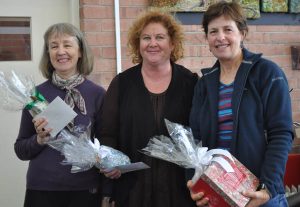
The following people were elected as the new Committee:
Marion Finneran Secretary
Chris Gray Treasurer
Committee members – Sue Eslick, Sara Quail, Liz Owens, Alison Higgins, Karen Wood.
Liz Odd was awarded a certificate of Life Membership in recognition of her contribution over many years.
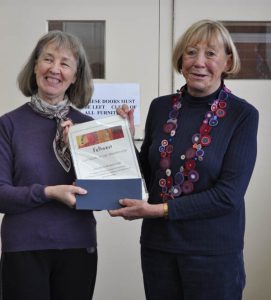
The new Rules of Association were endorsed.
Sue Eslick reported feedback from a group meeting to assess a new format to Toss + Tell. – it is suggested that we expand the monthly demo, into a mini hands-on workshop from 10am to 11.30, this would be followed by a short meeting, then we could have the whole afternoon, from 12.30-4.40 for uninterrupted felting. Proposals also include a new name for Toss+ Tell, a variety of demos or guest speakers, sellers to be invited by the committee to each monthly meeting on a roster basis – approx. 2 at each meeting. General consensus supported the suggestions presented. The proposed format will be referred to the new Committee for decision and action.
Martien van Zuilen showed the FibresWest Calendar 2018 which had been presented to each participant at the FibresWest Forum. The excess were being sold at $15 each being a charity fundraiser. Martien also donated to our library a copy of a newly published book on needle-felting that she had reviewed in the recent edition of the Felt Magazine.

Toss+ Tell Report
Pat has knitted a fine white shawl onto which she felted beautiful wild flowers – a botanical delight !
Liz Odd has made 27 scarves that she will be taking as gifts on her forthcoming visit to Canadian family. She showed us how she used the same design of silk fabric and produced very different scarves by nuno felting them with different colour wool.
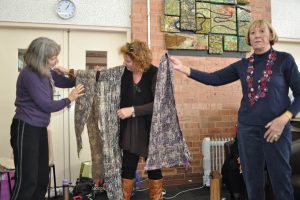
Marion made a muslin jacket in Jan Manning’s workshop and discussed the various things that she had learned in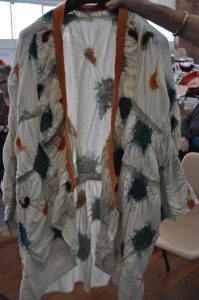 the process regarding shrinkage, preparation of the prefelt and fit of the garment. The jacket was in an abstract pattern of shades of green and peach/orange on the cream muslin.
the process regarding shrinkage, preparation of the prefelt and fit of the garment. The jacket was in an abstract pattern of shades of green and peach/orange on the cream muslin.
Judith Walsh made a muslin jacket in Jan Manning’s workshop and discussed her difficulties with applying prefelts to the muslin fabric. Her jacket design was in broken stripes in shades of blues and purple on the cream muslin, worn here by Jill.
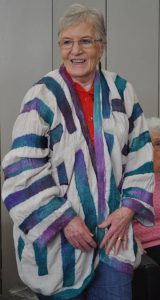
Fern made a muslin jacket in Jan Manning’s workshop and discussed her sizing ie that when it was properly fulled it was too small. Her jacket, modelled here by Alison, was in shades of brown and cream.

Ann Bonnie made various jackets but used her own fabric patterns. One was felted on muslin with a matching scarf. The others were nuno felted on silk. They all were most attractive and fitted extremely well.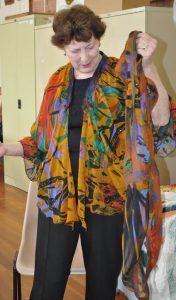
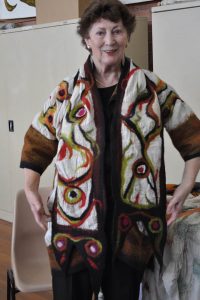
Vera showed us her bag that she was wearing. She had converted it from another project that had not been successful.
Alison Gomes displayed her latest wall hanging – a beautiful , balanced mix of geometric colours reminiscent of floor tiles.
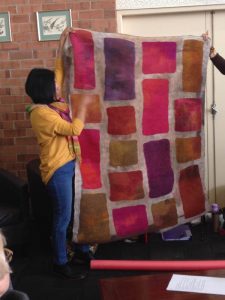
We ended the day with a delicious chocolate cake presented to Lyn Lukich on the occasion of her 85th birthday
.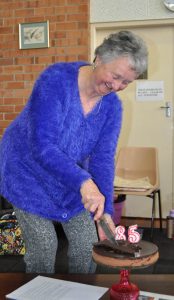
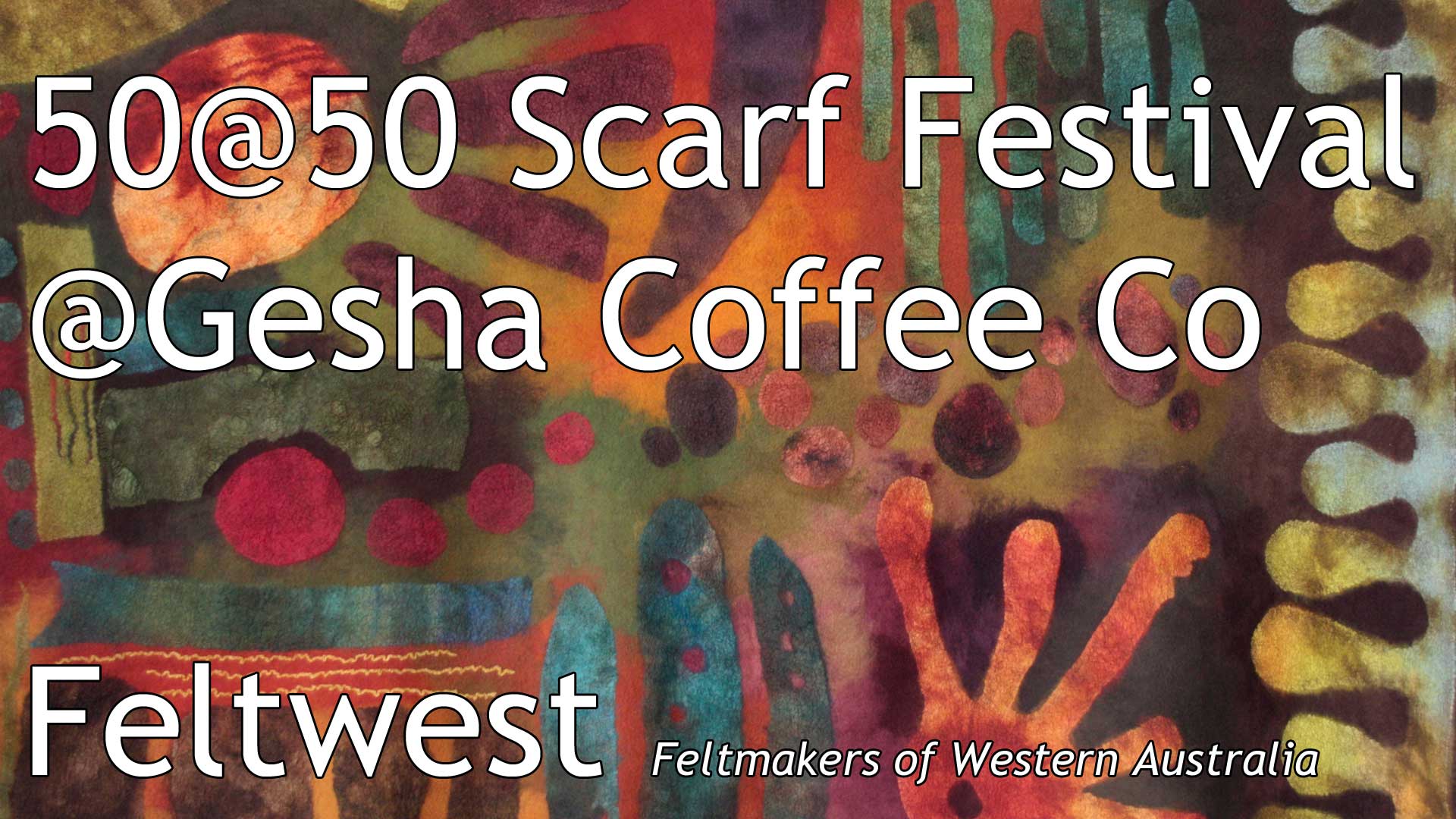
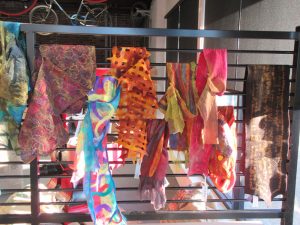
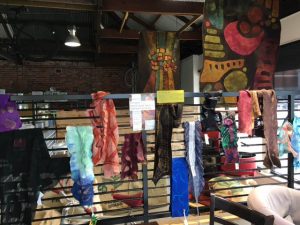
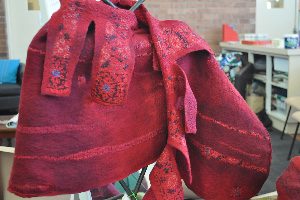

 r Freedom Project that the proceeds of the scarf project will be donated to.
r Freedom Project that the proceeds of the scarf project will be donated to.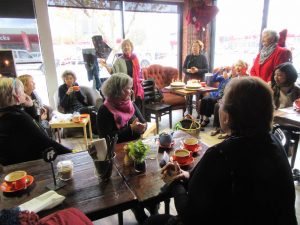

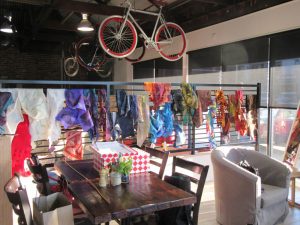

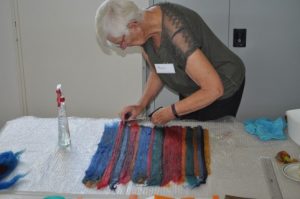
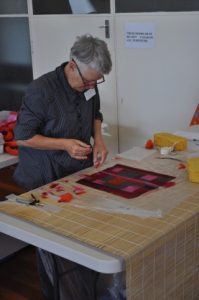

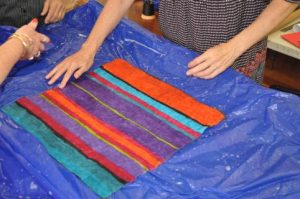

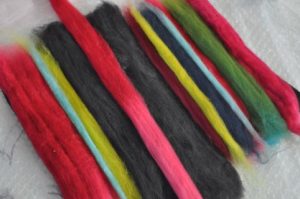
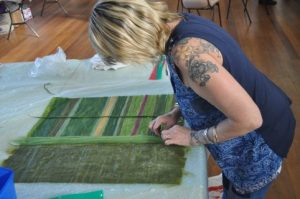

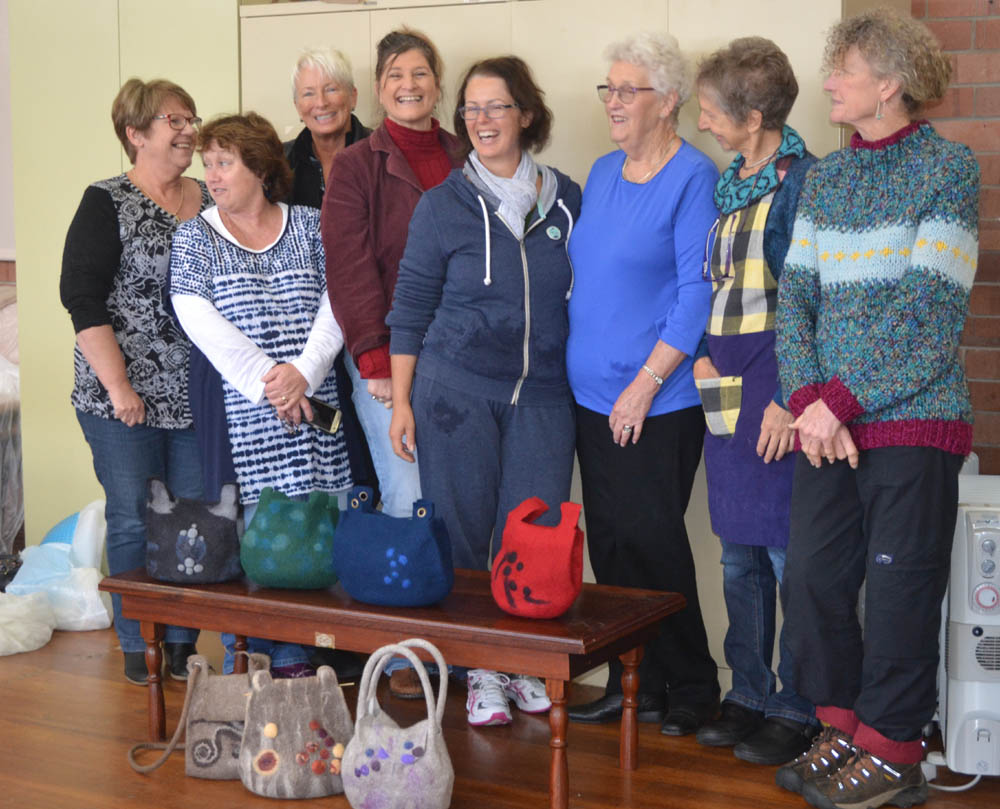
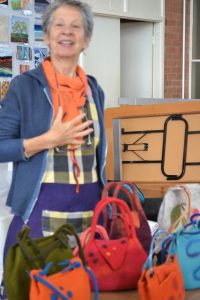
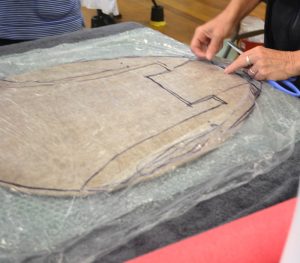

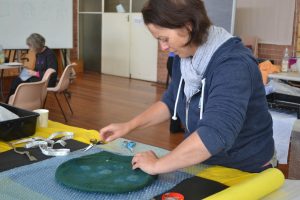
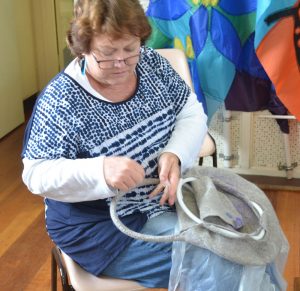 The 2nd day was devoted to the final fulling, and hardening of the felt, as well as the fitting of handles, clasps, cords and the final shaping.
The 2nd day was devoted to the final fulling, and hardening of the felt, as well as the fitting of handles, clasps, cords and the final shaping. It was a very successful workshop. Each participant was thrilled with their own very individual bag and left having learned many new techniques in the process.
It was a very successful workshop. Each participant was thrilled with their own very individual bag and left having learned many new techniques in the process.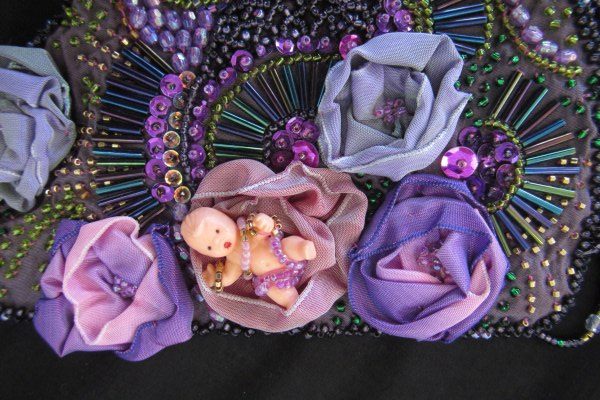
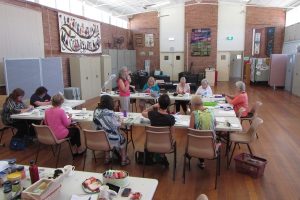
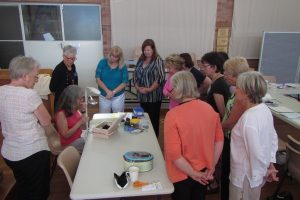
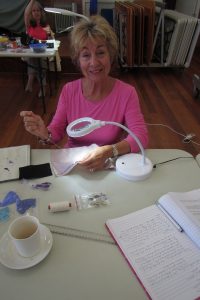
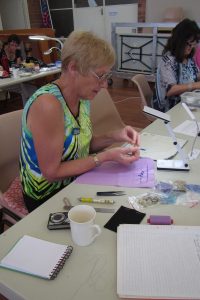
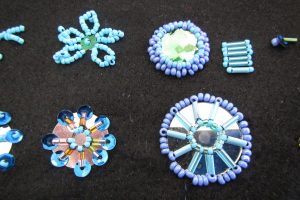
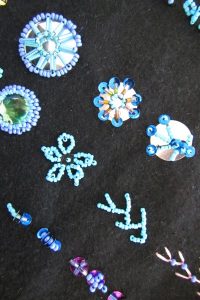
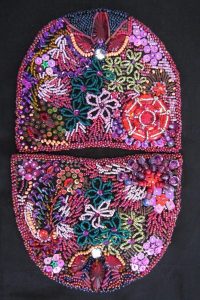
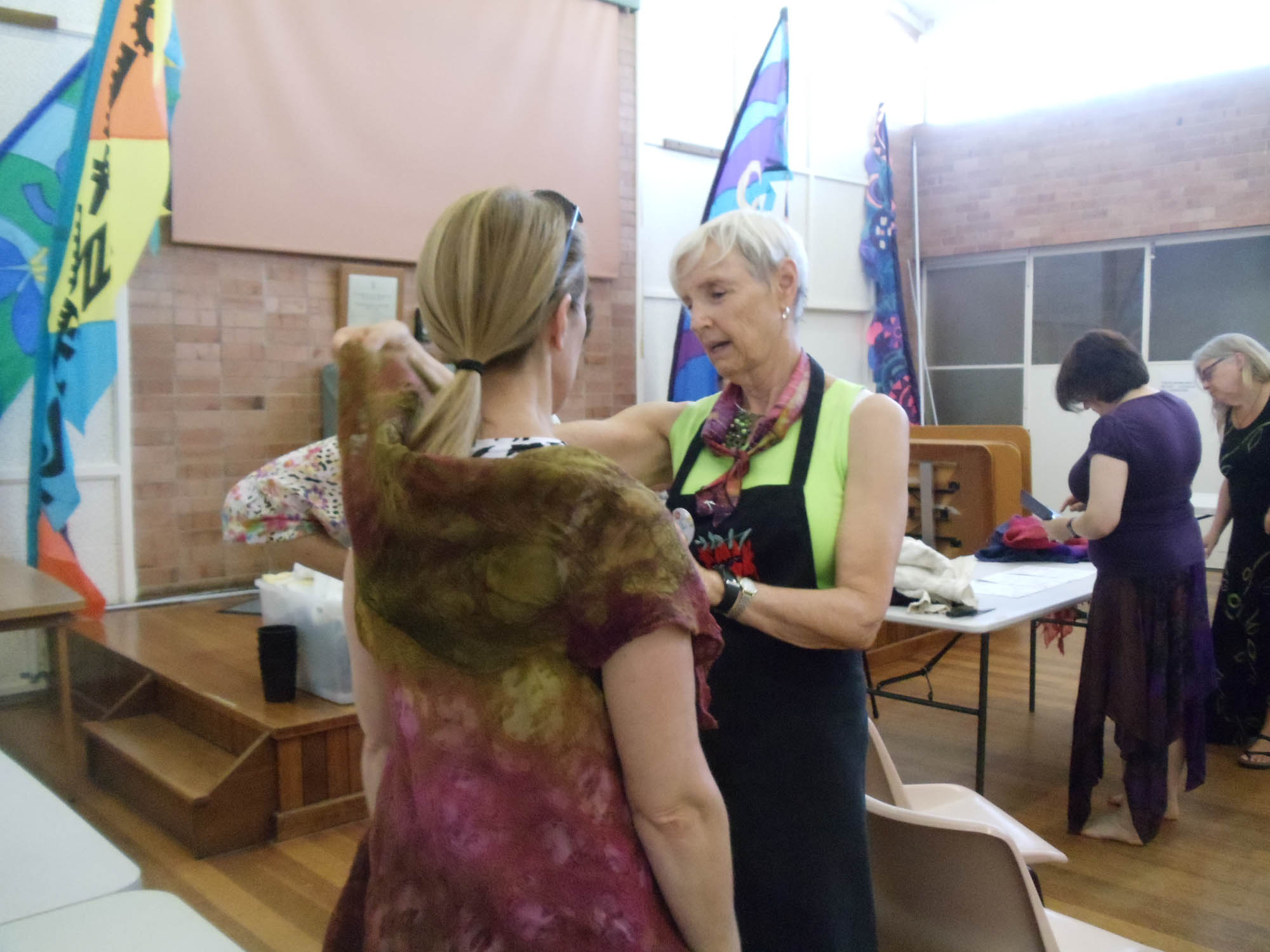
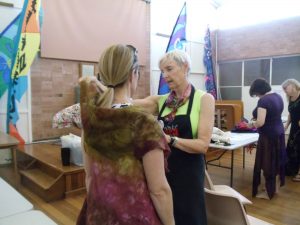
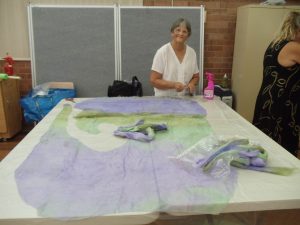
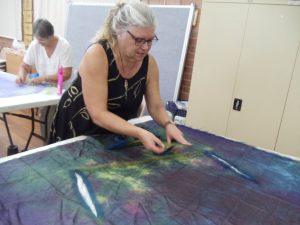
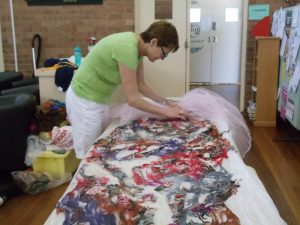

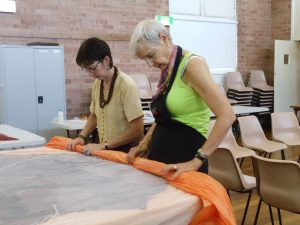 s to use and how to use them effectively, we wetted out the work before commencing the initial rolling. One of her great tips was the use of tee-shirt strips to tie the bundle for rolling.
s to use and how to use them effectively, we wetted out the work before commencing the initial rolling. One of her great tips was the use of tee-shirt strips to tie the bundle for rolling.
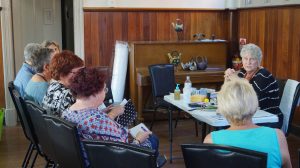
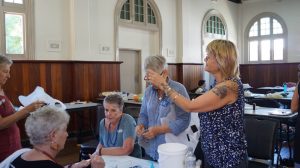
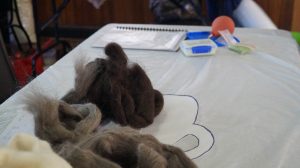
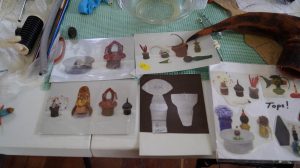 And finally on Day 3 the focus was on creating teapot stoppers made to fit exactly. The creative ideas of feltwest members were not lacking! Stoppers were generated in all shapes and sizes from otherworldly green lumps to a small red hat, others were more teapot shaped!
And finally on Day 3 the focus was on creating teapot stoppers made to fit exactly. The creative ideas of feltwest members were not lacking! Stoppers were generated in all shapes and sizes from otherworldly green lumps to a small red hat, others were more teapot shaped!